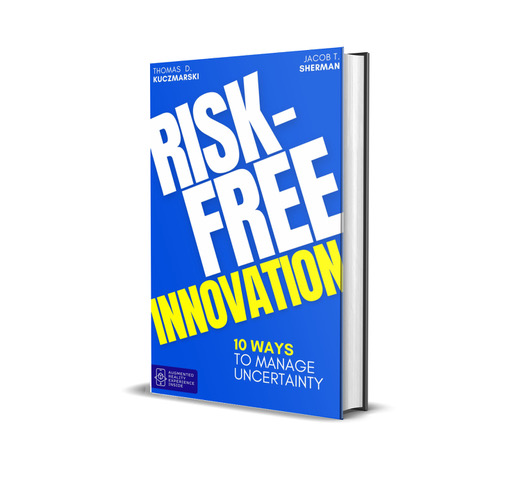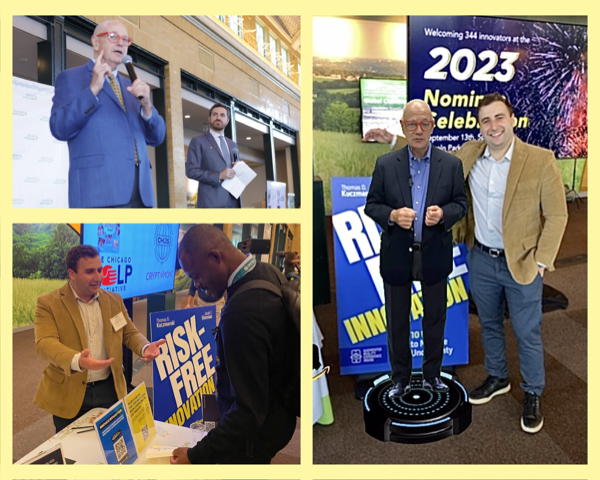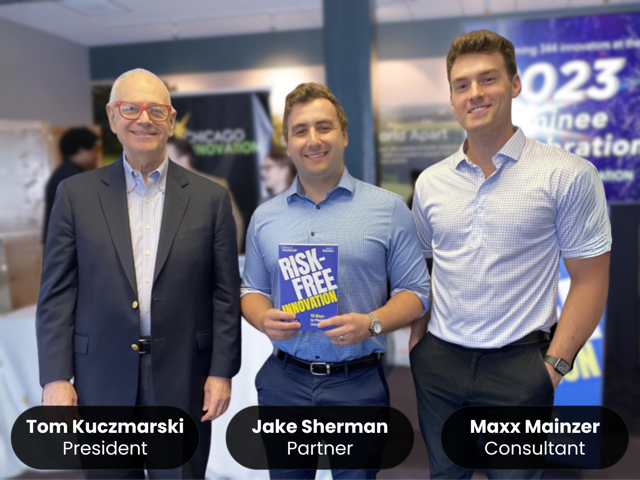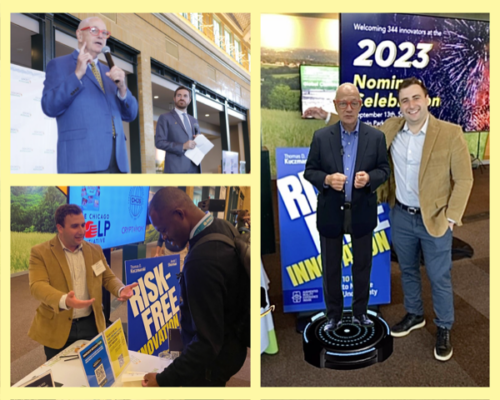
By Judy Carmack Bross
“Only those who risk going too far can possibly find out how far one can go.” T.S. Eliot
Tom Kuczmarski’s latest book, Risk-Free Innovation: 10 Ways to Manage Uncertainty, works for individuals and organization that want to conquer the universal fear of risk and sustain long-term growth. It sounded to me like the best way to empower New Year’s resolutions as we face into 2024 and that T.S. Eliot, whose quote opens the book’s foreword, sure makes sense.

“Train yourself to let go of everything you fear to lose,” Kuczmarski quotes Star Wars Yoda as saying. He then provides 10 risk reducers that you can start using right away while reminding readers: “the need for innovation touches every part of our lives, relationships with family and friends, discovering new things to do together, as well as with your work.”
Anyone can be an innovator. and innovation is a team sport. He says that building a team diverse in age, race, gender, functional abilities, and experiences who will look at a problem and come up with different solutions, is a must for the process. And that everyone has a “secret sauce” which they can use to empower their innovation.

The author of nine books, co-founder of Chicago Innovation and academic director of executive education courses at the Kellogg School of Management, he gives us a road map for reducing risk as well as adding augmented reality through a QR code in each chapter so that materials can be continuously updated by himself and co-author Jacob Sherman to make it a “living book, with new features and content delivered over time.”

“Through the use of augmented reality, we are elevating the reading experience by bringing dynamic and interactive learning content to provide more engagement of valuable insights,” he said.
“Historically, innovation and risk have been synonymous. But now we are reassessing this relationship and uncovering new techniques to mitigate risks,” Kuczmarski writes.
Kuczmarski tells a few cautionary tales of “companies who thought they were too big to die.”
“When you look at the Fortune 500 companies from 2001 to 2021, only 247 of the original list are still there in 2021. More than half fell from the list, either because they failed or they were acquired,” he said. There were Blockbuster videos on every corner, then Netflix came along to disrupt.”
Kuczmarski sites success stories.
“Restaurants, especially those with quick service, suffered some of the greatest blows in the early days of the pandemic. Chicago-based Potbelly Sandwich Shop realized it had to act and through its Potbelly Pantry it began selling ingredients wholesale something totally new to the industry and gave customers an easier way to prepare their favorite sandwiches at home. This quick, innovative thinking proved crucial in salvaging loss occurred from on-site sales.”

Reading a recommendation for Creative Destruction made me catch my breath as I worked on my Resolutions list until Kuczmarski explained: “it’s simply a matter of stopping doing things in a certain way.” He gave the example of Luke Saunders,
Saunders founded Farmer’s Fridge after realizing how hard it is to get fresh food on the go. “Taking the concept of the old vending machine which was mainly candy and pop and turning it into an opportunity to get fresh and healthy food is a strong example of problem solving not just saying I am going to disrupt the norm.”
Patience and compassion are important parts of the process. “We don’t talk about compassion enough. You first have to learn what others are thinking, take a walk in their shoes. Then work with a team of people to find new solutions. This truly takes the pressure off and helps build the confidence of all,” he said.
“Maybe I am going to think about things differently,” Tom recommends our saying to ourselves. That sounds like a good New Year’s resolution to me.
is a link YouTube video reel highlighting the AR content:https://youtube.com/shorts/muxzrpPG-a0?si=u5f129EMFZVxRTGZ







